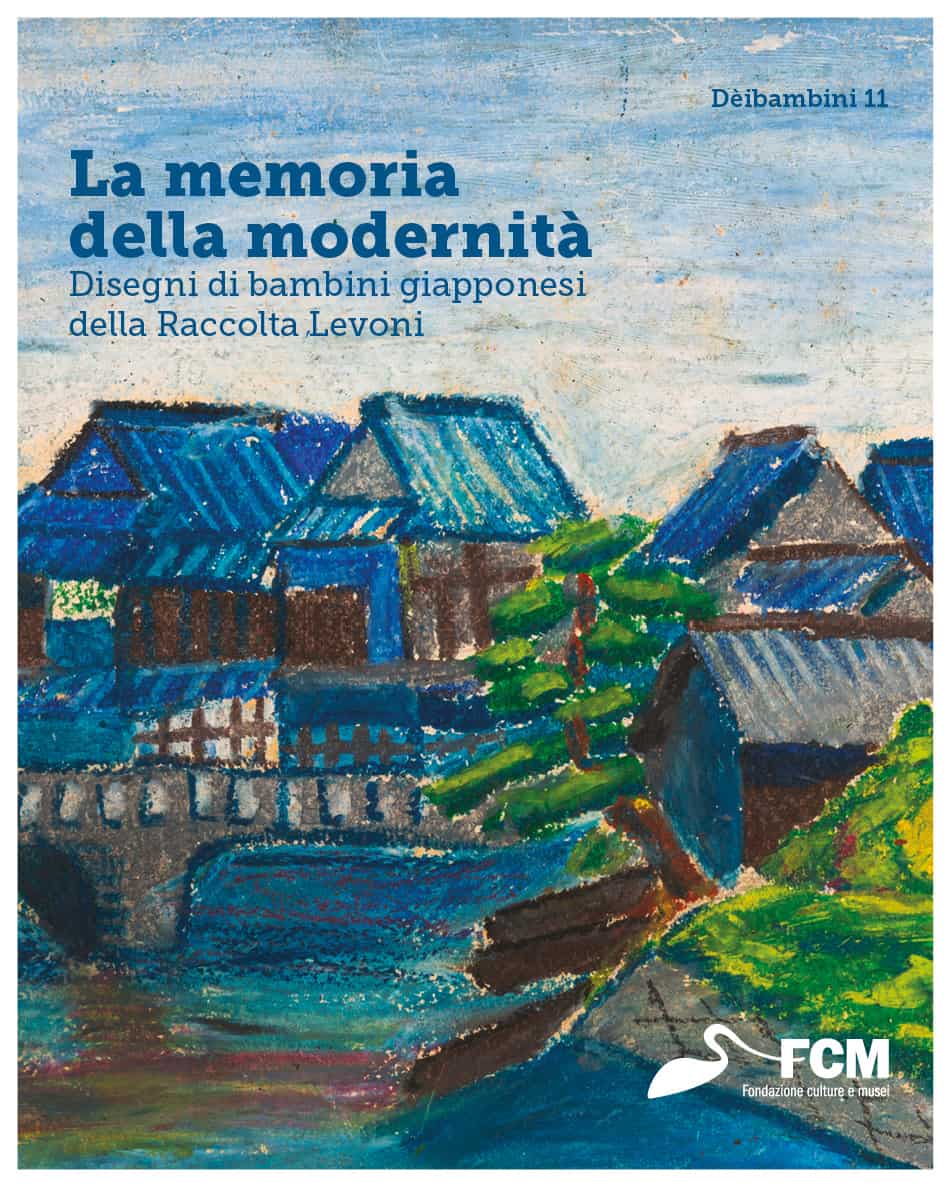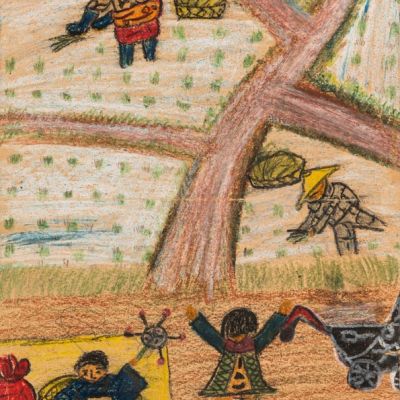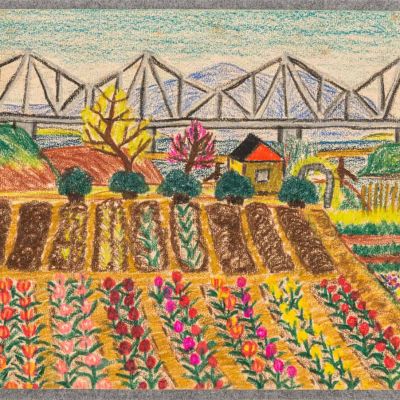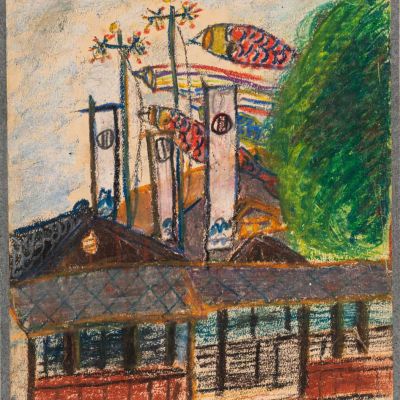JAPANESE CHILDREN'S DRAWINGS FROM THE LEVONI COLLECTION
MUSEC inaugurates the eleventh appointment of the ‘Dèibambini’ cycle with a fascinating project full of chance encounters, intuition, colours and creativity. Its story begins in the spring of 1997 when Gloria Levoni, a passionate collector and patron from Mantua, discovers among the stalls of the antiques market in Fontanellato (Parma) a collection of children’s drawings with formidable colours. Suddenly, the drawings reminded her of the Heian-era paintings (794-1185) illustrating the Story of Genji, the Shining Prince, an 11th-century Japanese novel, then on her bedside table. She thus decided, on the spur of the moment, to buy those drawings pervaded by the Orient: landscapes, houses, gardens and scenes of everyday life that moved her, lyrically echoing her readings. It is the beginning of an affair full of surprises that will lead, in a short time, to the realisation that it is the fragile fragment of an immense quantity of works erased by time: about four million drawings made in 1938 for a competition among children (8 – 13 years old) from schools in Axis countries – Japan, Germany and Italy – organised by Morinaga & Co., a large confectionary company founded in Tokyo in 1899. On show in the Spazio Maraini are fifty drawings made with oil pastels on paper and three watercolours on paper. Enriching the exhibition curated by Francesco Paolo Campione and Sabrina Camporini are two masks from the Montgomery Collection in Lugano depicting the head of a lion [shishi gashira] with large jaws, mobile ears and jaw, used in Japanese folklore dances. Also on display will be a copy of the rare volume published on the occasion of the temporary exhibition of children’s drawings from the Morinaga competition, held in Tokyo at the end of 1938, and a sculpture by the artist Hayami Shirō (b. 1927), who was one of the prize-winning children in that competition and has become a respected and recognised artist in Japan. The terracotta and lacquer work, created in 2008, was recently acquired by Gloria Levoni, who generously made it available to MUSEC for the exhibition.

If the underlying aim of the Japanese educators involved in the Morinaga competition was to show a portrait of a country that had achieved, after three generations, the full ‘opening to civilisation’ (bunmei-kaika) foreshadowed by Fukuzawa Yukichi (1835-1901), the Levoni Collection allows us to detect, loud and clear, the signs of the survival of the local cultural tradition.
Western-style buildings, metal bridges, petrol stations and light poles are counterbalanced by gardens, glazed ceramic tiles, rice paper windows, thatched-roof farmhouses, pagodas, carp banners for the May festival, stone lanterns and the ubiquitous guardian lion-dogs of shintō temples.
The chromaticisms, then, the same as in ukiyo-e, are a sort of identity element that marks the deep-rooted continuity of a certain vision of the world.
The dominant visual element of the works in the Levoni Collection is the presence of a thick, material colour, turned into a surprising multiplicity of contrasting chromatisms: almost as if the innate joy that characterises the creative horizon of children between the ages of eight and thirteen had found its own elective means of expression. The drawings amaze with the intensity of the oil pastels with which they are made, and thanks to which the perception of signs and forms is transformed into an intimate pervasion: the colour vibrates and impresses inwardly, lingers and seduces, putting us in immediate communication with a childlike phenomenal universe.
The perfection of such an efficient pictorial tool suited to the expressive potential of Japanese children is due to the genius of the painter Yamamoto Kanae (1882-1946), who was one of the founders of the modernist movement Sōsaku-hanga (“Creative Prints”). His pedagogical theories, widely adopted in the elementary schools of the time, advocated the importance of creative self-study, drawing from life en plein air and a massive use of colour, leaving the child the choice of the object of representation and maximum freedom in colour combinations.
The Dèibambini project was founded in 2005 as a platform for interaction between the museum and the school. In its first ten years, the project allowed children to engage with different themes, with the aim of increasing their awareness of their own potential and inner vision and strengthening their ability to interpret the world. Since 2022, the starting point has been the works of children from the past. The idea is to build a bridge between the children’s creativity of yesterday and today, through the in-depth exploration of expressive content that not only interconnects cultures, but has served as an extraordinary source for the renewal of artistic languages in the 20th century. A solid bridge, full of poetry, to connect the generations.




